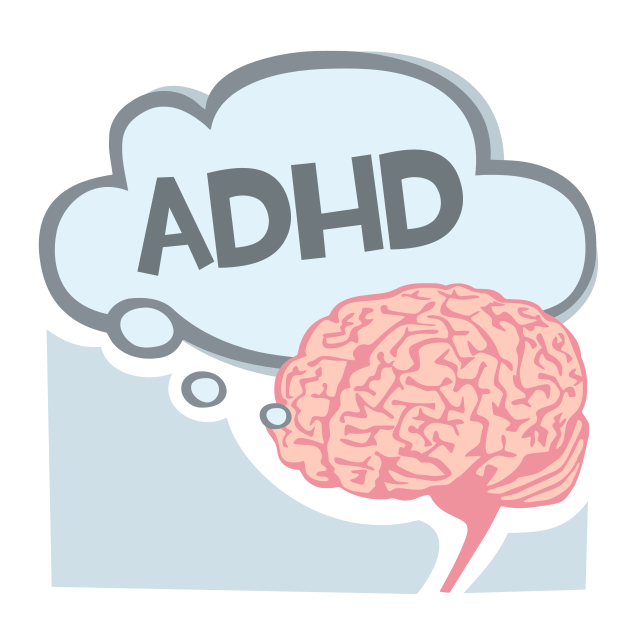Happy October, everyone. The leaves are yellow, orange, and red, and the assignments I meant to do are missing.
Not only is October the month of Inktober and Halloween, but it is also ADHD awareness month. Many people across the world are diagnosed and undiagnosed with ADHD. As with most disorders, it lies on a spectrum of intensity: mild, moderate, and extreme.
For anyone unfamiliar with the acronym, here is what it is broken down:
Attention Deficit Hyperactivity Disorder. According to VeryWellmind: Attention-Deficit/Hyperactivity Disorder , this disorder is recognized for impacting attention span, impulsivity, and hyperactivity.
According to VeryWellmind: Combined Type, there are three types of sub-classifications of ADHD — ADHD (Inattentive), which is “characterized by problems with regulating attention,” ADHD (Hyperactivity), which is “characterized by impulsive and hyperactive behavior,” and ADHD (Combined: Attention Deficit Hyperactivity) “where both hyperactivity and inattention problems are present.” The subtypes were updated in the DSM-5 (2013).
Let’s break down what each of these three sub-types are:
ADHD (Inattentive): VeryWellmind: ADHD Inattentive states that this subtype affects the ability to keep attention. ADHD (Inattentive) is sometimes called ADD (an outdated term not often used). People with ADHD (Inattentive) often have “few or no symptoms of hyperactivity or impulsivity.” VeryWellhealth: Do ADHD Symptoms Differ in Boys and Girls? explains that biological women, more likely than not, internalize ADHD (Inattentive) symptoms, which can appear as “making careless errors, ‘zoning out’ when spoken to,” not following multi-step instructions correctly, “difficulty with organization, [and more.]” Other internalized signs in biological females (girls), such as “low self-esteem [and] anxiety, “ can lead them to develop or worsen “comorbid conditions” such as “depression, eating disorders, sleep disorders, substance abuse…” Generally, they diagnose many women later in life because some trained professionals do not immediately recognize the internalized symptoms as actual symptoms of ADHD.
ADHD (Hyperactivity): This subtype affects the ability to control impulses and movements. ADHD (Hyperactivity) is primarily seen in boys. In contrast to girls, many do not internalize their symptoms. Hyperactive symptoms are and are not limited to “fidgeting, tapping in their seat; inability to stay still, blurting out answers before called on, interrupting people in conversation [and other activities], constantly on ‘the go,’ talking excessively, [etc.].” explains VeryWellhealth: Do ADHD Symptoms Differ in Boys and Girls?. As for the externalized symptoms, they can come in the form of “Oppositional Defiant Disorder (ODD), Conduct Disorder (CD), rule-breaking behavior, [outwardly] aggressive behavior, and antisocial behaviors [(typically seen in more adults than children as they are characteristic of Antisocial Personality Disorder)].”
ADHD (Combined Type): This subtype affects the ability to keep attention and control impulses and movements. According to VeryWellhealth: What is ADHD Combined Type?, studies estimate that 70% experience combined ADHD. The DSM-5 states that one must be “experiencing symptoms of both inattentive and Hyperactivity ADHD for at least six months.” If the person is “17 and older,” they must exhibit at least five symptoms. The prominent challenge people with ADHD face is “not reaching their full potential” because they are “impulsive and hyper.” Examples include “not completing tasks [or] trouble making friends.” Often, like the other two subtypes, there are usually comorbid conditions such as “[other] learning disorders, depression, anxiety, or behavioral problems.”
All of this is a lot to take in. So, dear reader, take a few minutes to rest your brain if you’d like. People with ADHD and other learning disorders, including Dyslexia, need constant short mental breaks to carry on with productive work.
Alright. Let’s return to ADHD.
Now that we have covered the three subtypes and understand what ADHD is, we can boil everything down to something called the ‘ADHD Iceberg.’
VeryWellmind:‘ADHD Iceberg’ explains that the ADHD iceberg represents that many other ADHD characteristics and experiences are well-hidden because they do not precisely fit the iconic symptoms of complete inattention, impulsivity, and hyperactive (distracting) behavior. It shows that people mainly see the external characteristics of ADHD (the tip of the iceberg). Some of these include forgetfulness, leaving things unfinished, etc. Whereas the internal experiences of ADHD are complex. Experiences include and are not limited to “emotional dysregulation, motivation problems, hypersensitivity, time blindness” according to VeryWellmind: Decision Paralysis. Although many ADHD experiences can be painful or harmful, that is not to say that ADHD is all bad. People with ADHD can have some exceptional strengths. ADHD’s superpowers are “high energy levels, creativity, spontaneity, self-awareness, resilience, conversational skills, enthusiasm, empathy, and persistence.”
To summarize, ADHD is a complicated disorder with many pros and cons. Like many disorders, there is a spectrum of severity. Because there are iconic characteristics of ADHD, many biological females, in particular, can go undiagnosed. So, there is a likely chance that at least one person you know lives with ADHD. ADHD, if approached right, the difficulties can become tolerable. However, if incorrectly addressed, the problems can become overpowering.
In conclusion, if you are grappling with the thought of having ADHD or know someone who might have ADHD (and is not diagnosed), seek a learning specialist and get the necessary resources or support for your success and well-being.
Remember: having a neurodivergency, like ADHD, is not a bad thing. Many people who have made incredible discoveries, such as Albert Einstein and Nikola Tesla, were neurodivergent.
Embrace your neurodivergence and learn to work with it rather than against it.

































